Hilbert Museum of California Art expands and reopens to general public with nine exhibitions
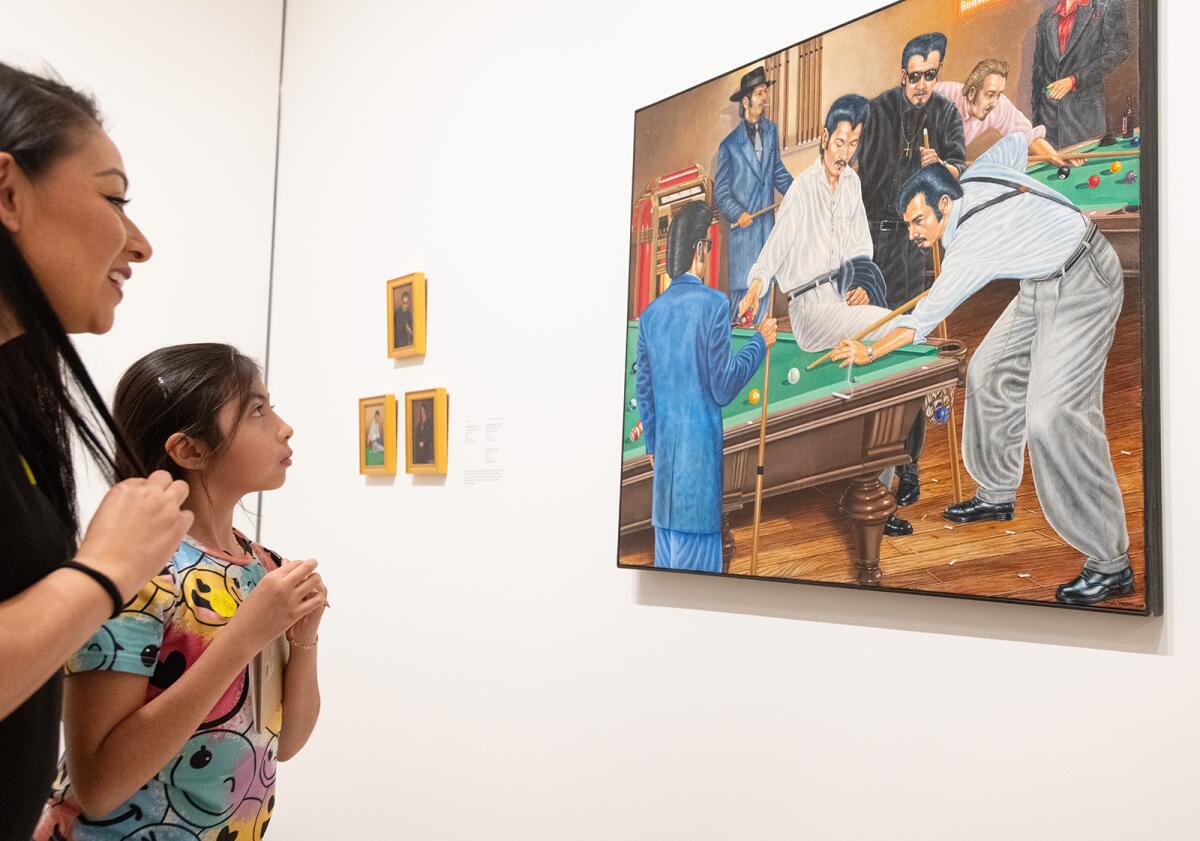
In the warm light of the newly expanded Hilbert Museum of California Art on a recent Wednesday afternoon, Mark Hilbert smiled with quiet pride as patrons passed by. Discussions came and went in hushed whispers as some talked about what they were most excited to see while others spoke of pieces they’d marveled at moments before.
Hilbert said his wife, Janet, was curious about what kinds of things people were saying since the reopening of the museum last weekend, and he took to writing down things he heard: “flabbergasted,” “inspirational,” “comprehensive,” “easy to navigate, move through,” “not intimidating.”
Hilbert read off the descriptors as he sat in the north wing, which houses the “Same Place, Another Time: Views of Orange County” exhibition featuring Hilbert collection pieces that depict Orange County in the 20th century.
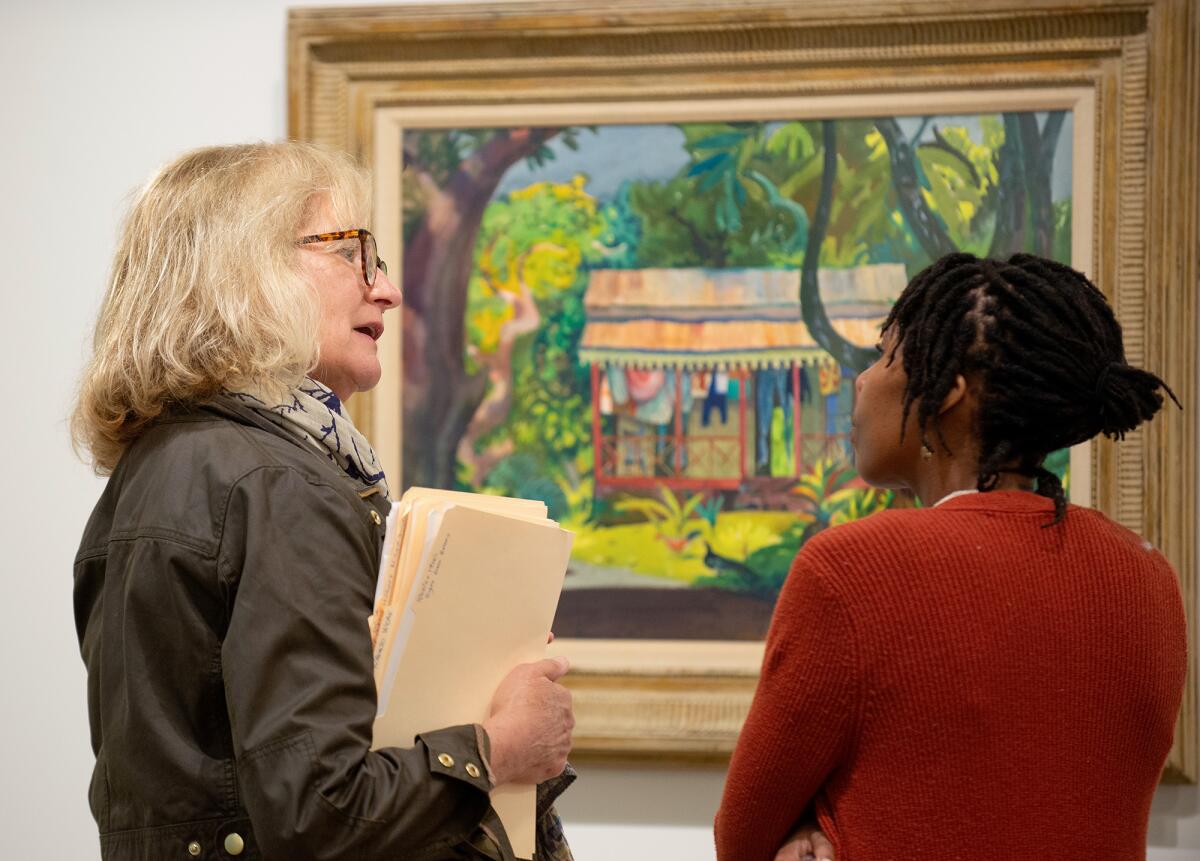
More than 5,000 pieces exist in the Hilberts’ collection, and museum director Mary Platt said the intention is to cycle the exhibits every three months.
The Hilbert Museum of California Art first opened in 2016 with a major gift from the Hilberts to Chapman University in 2014. The museum later closed for its expansion, which tripled the museum’s footprint from about 7,500 square feet to 22,000 square feet. The redesign was the work of Johnston Marklee Associates of Los Angeles.
The museum’s north wing houses five exhibitions while the south wing hosts four. A crowd of about 3,350 visitors turned out for the Feb. 23 reopening, according to Platt. They found not only additional gallery space, but a cafe, community room, an outdoor courtyard and a research library.
Exhibitions run the gamut of California’s artistic history, spanning the late 1800s to the present. It includes the work of Hollywood studio artists like Mary Blair, who was a concept artist on Disney’s “Alice in Wonderland,” “Peter Pan,” “Song of the South” and “Cinderella.” It also showcases works from Orange County artists, including muralist Emigdio Vasquez, who was known as the “godfather of Chicano art.”
Visitors are greeted by a Murano glass mosaic mural by Millard Sheets titled “Pleasures Along the Beach.” Inside they can see works by well-known artists, intricate Navajo weavings and more. One of the surprise favorites has been the exhibit of antique radios the Hilberts collected over the years.
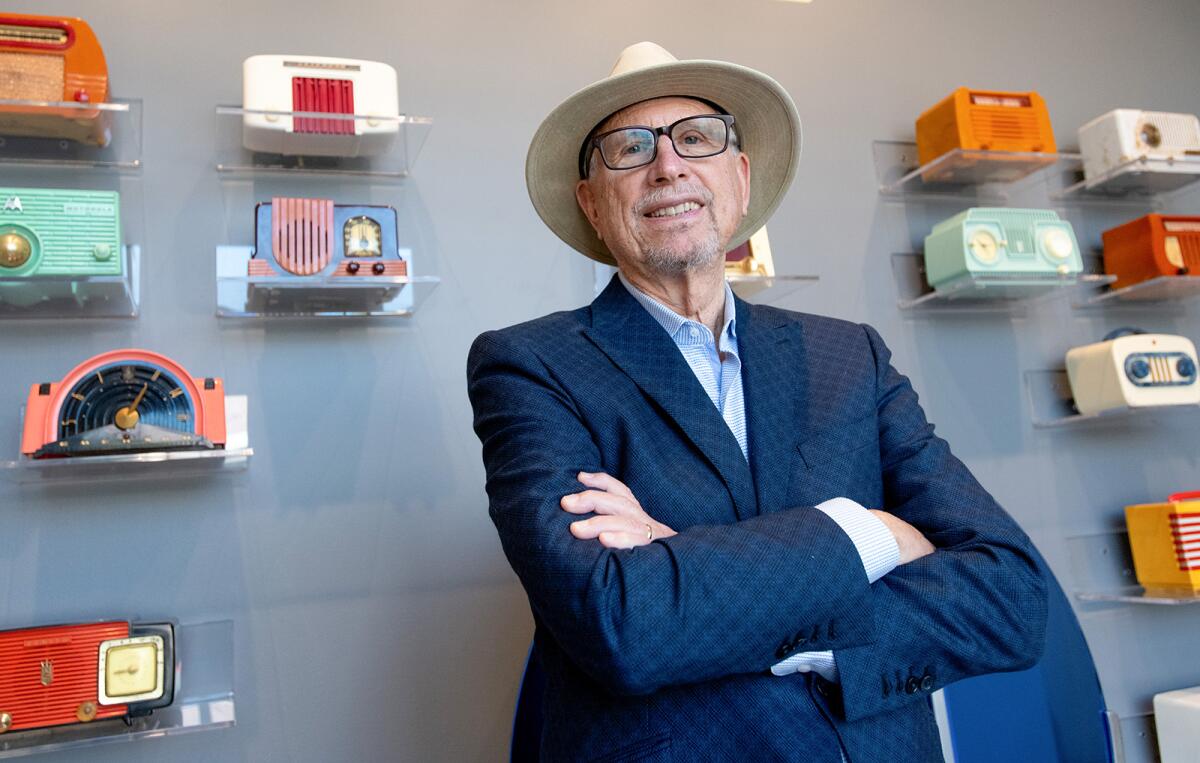
“When I was a kid, my parents had an appliance store in Pasadena,” said Hilbert, now a Newport Coast resident. “And one of my first jobs was just to take [radios] out of a box and put a price tag on them to put them on the shelf. And I started to look at these radios and started thinking, ‘Gee, these are some really interesting designs.’ And later, we come and find out that these radio companies hired some of the greatest designers available to design the cabinets and create special plastics for these radios.”
Nick Gulan, an illustration student at Fullerton College who was visiting the museum said he’d come to study the radios for a few hours. He said he drew what he saw for an industrial design class.
“A lot of it comes down to the overall shape language, the style of it and how things are pushed in. You don’t see it a lot too much in such a creative and stylized way anymore. It’s very Art Deco in a way too. It’s just good design,” Gulan said. “The colors are fantastic, but at the end of the day it just comes down to good design.”
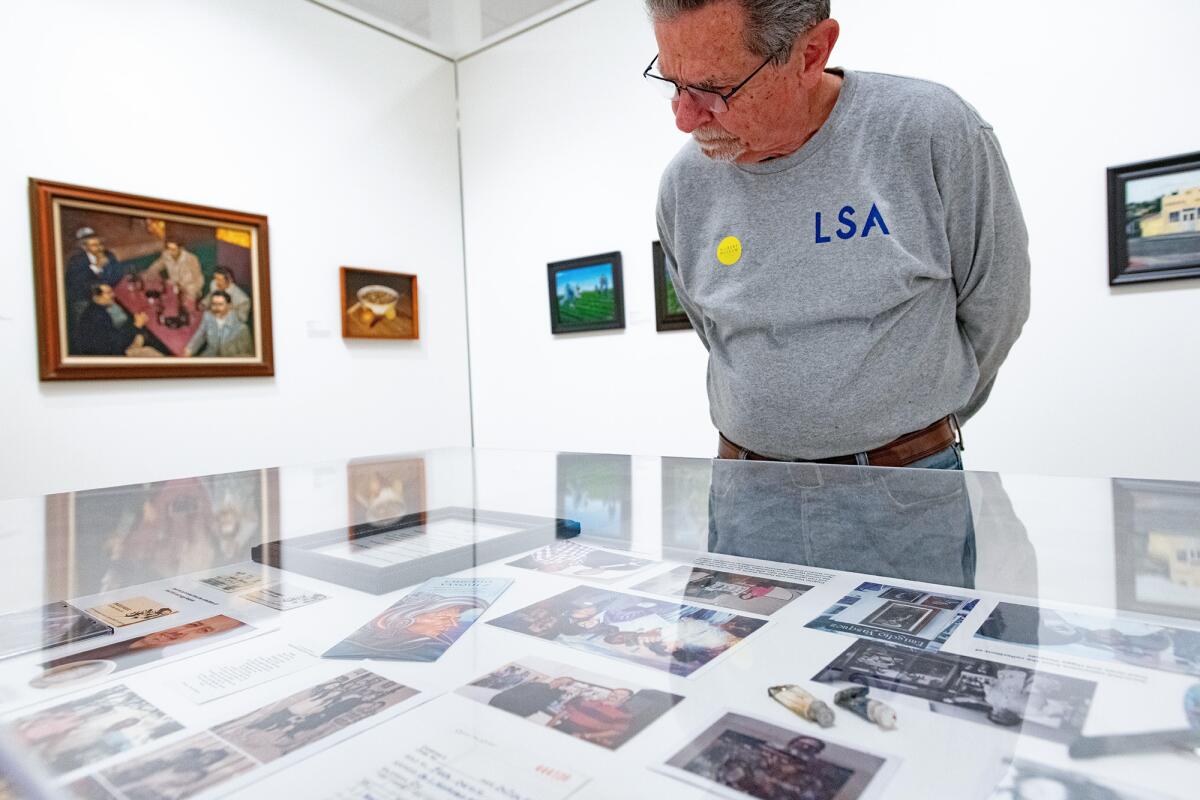
Hilbert said he started collecting narrative art after his wife remarked that a landscape painting he’d brought home would have been more interesting if people were included in the scene. Since that time the pair have collected more artwork that includes human figures because, he said, they tell a story.
“I think the expansion really gives us an opportunity to have a wider diversity of shows that will appeal to more age groups,” Platt said. “Virtually, everyone will find something here to like. One of the reasons for our museum is that we want to emphasize how very unique California was and the 20th century art, especially. We had the movie industry right here and nobody else in the world had that.
“So, during the Great Depression, the movie studios were attracting artists from all over the world to come and work for them because it was a way for them to earn money while continuing to ply their trade. And then in their spare time, they’d go out into the hills and the wilderness and the shorelines or the cities in California and paint their fine art. We had so many people doing that ... and so we can bring to the attention of the world these great names in California art.”
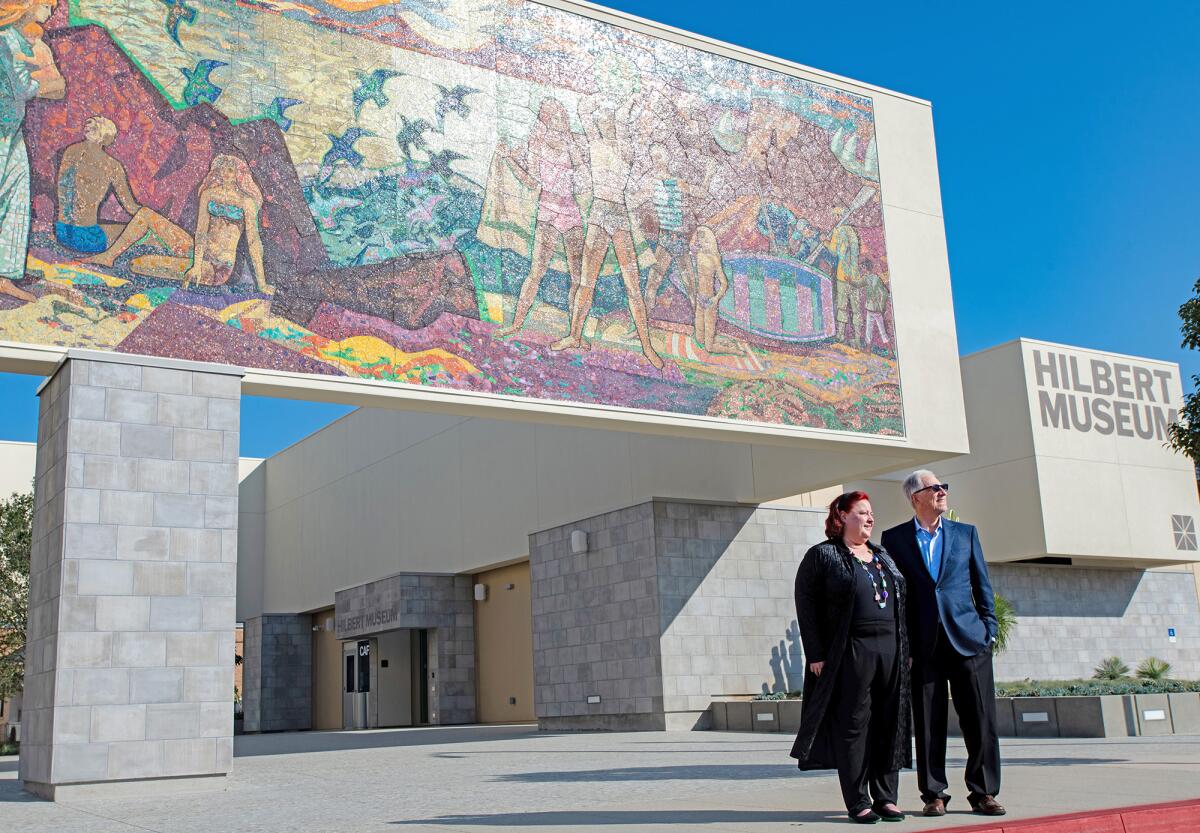
All the latest on Orange County from Orange County.
Get our free TimesOC newsletter.
You may occasionally receive promotional content from the Daily Pilot.




